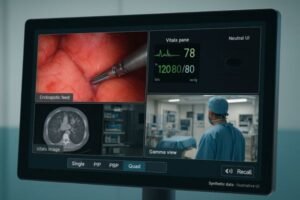High-precision laparoscopic procedures demand utmost focus and seamless instrument manipulation. A 32-inch surgical monitor perfectly balances detail immersion with surgical field awareness, crucial for such minimally invasive surgeries. Its size enhances surgeons’ capacity to distinguish minute movements, following the delicacies of surgery without overwhelming the view.
A 32-inch monitor is preferred due to its combination of detail immersion and field awareness, aiding precision without visual clutter, thus ensuring optimal performance in delicate laparoscopic procedures.
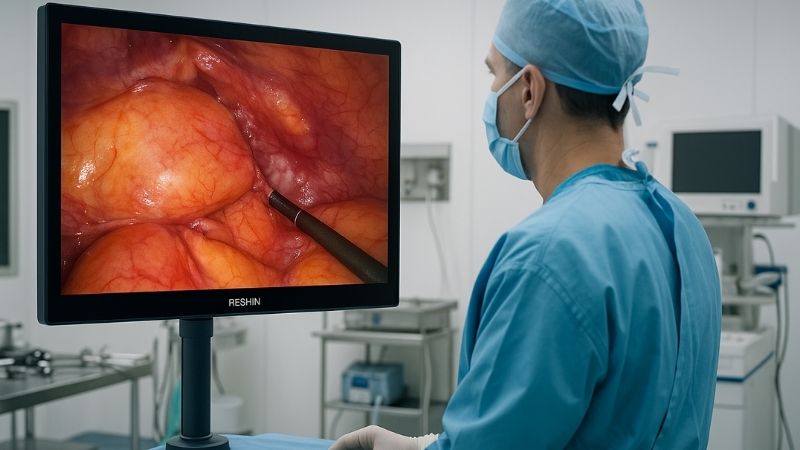
As someone deeply involved with advancing surgical imaging at Reshin, I’ve witnessed how the right monitor size can transform surgical precision and efficiency. Here’s how a 32-inch monitor excels in high-precision laparoscopic tasks.
What makes 32 inches ideal for laparoscopic depth perception?
Depth perception is critical in laparoscopic procedures, where minute details are crucial. Monitor size can significantly affect perceived depth and detail clarity.
A 32-inch monitor enhances depth perception, offering the perfect balance of size for detailed view without loss of context in the surgical environment.
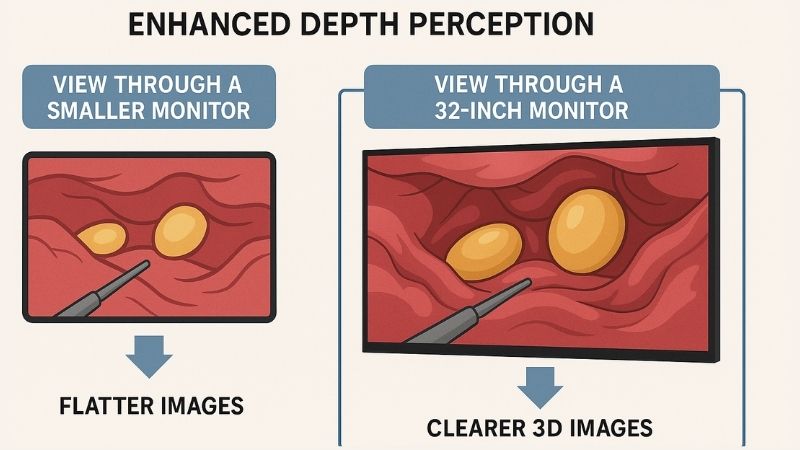
"A 32-inch surgical monitor1 offers a sweet spot between immersive detail and surgical field awareness, particularly important in minimally invasive procedures." The MS275P model exemplifies how such displays provide immersive focus on surgical activity while ensuring peripheral awareness of the broader surgical field. This size maintains suitable focal distance, allowing crisp demarcation of depth, pivotal in maneuvering instruments accurately. Enhanced visualization aids in tracking tool tips, exact tissue interaction, and manipulating 3D structures as if they were within the physical space, instead of relying solely on screen-projected images. This natural depth enhancement2 assures surgeons of spatial awareness necessary for precise execution of complex surgeries.
How does screen size influence eye-hand coordination in MIS?
In minimally invasive surgery (MIS), effective eye-hand coordination is essential. Misaligned screen size can lead to unnecessary motions, impacting accuracy.
A 32-inch screen aids seamless eye-hand coordination, ideal for the fluid maneuvering required in minimally invasive procedures, enhancing accuracy and efficiency.
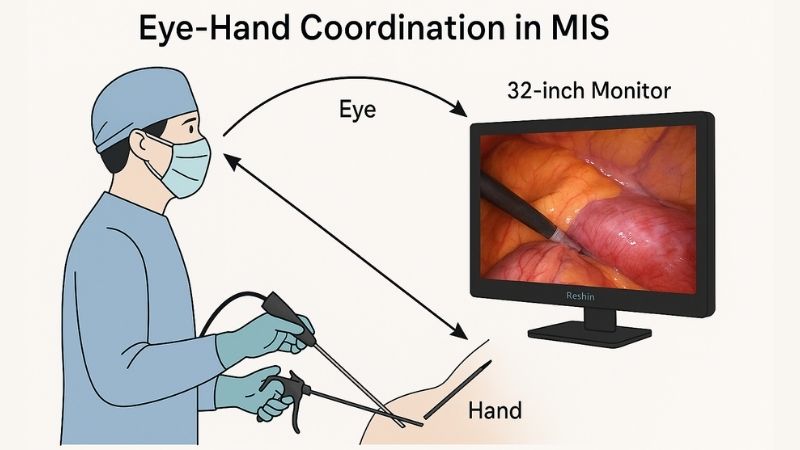
"Its size allows for high-resolution display3 without overwhelming the field of view, enabling surgeons to focus precisely on instrument tips and tissue interfaces." With the MS321PB, the ideal frame size removes constraints, maintaining comfortable eye-hand sync4 crucial for precise instrument control. This reduces the need for excessive head and eye movement, focusing directly on action points rather than constantly adjusting to maintain contact with the procedure’s key elements. The alignment of the screen with the surgical station makes transitions between look-and-move intuitive, minimizing cognitive load5 and reducing fatigue. Faster coordination directly translates into smoother procedures, enhancing both speed and outcome.
Why is resolution-to-size ratio critical in precision tasks?
A delicate balance between resolution and size ensures engaged focus without overloading visual interpretation, vital for precise surgical tasks.
Optimization of resolution-to-size ratio allows precision tasks to occur without visual strain, vital for nuanced laparoscopic interventions.
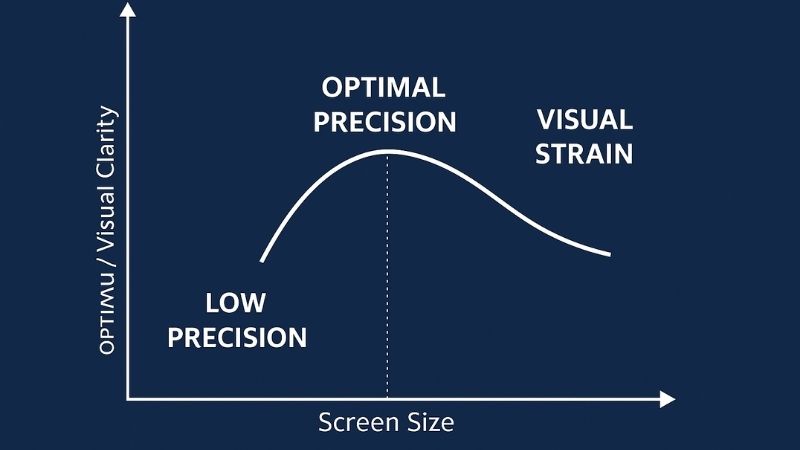
"For minimally invasive procedures1, combination of high resolution and optimal size clarifies visual cues for surgeons, crucial for exact and precise movements." The MS321PC model demonstrates how a 32-inch framing supports refined resolution-to-size ratio alignment, offering high clarity and detail without excess screen overwhelming visual processing. This balance facilitates clear image rendering of subtle distinctions, enhancing procedural focus by highlighting fine anatomical differences and instrument positioning. High fidelity resolution allows for intricate visual contrasts, vital for enhancing depth perception2 necessary when dissecting, suturing, or examining tissue. Overall, this combination assures surgeons accurate observation and response, promoting surgically efficient outcomes.
How does a 32-inch monitor reduce visual scanning effort?
Surgical efficiency is partly dependent on reducing unnecessary scanning motions caused by poor screen size or resolution management.
A 32-inch monitor efficiently reduces visual scanning effort, contributing to streamlined surgical processes by reducing excess head and eye movement.
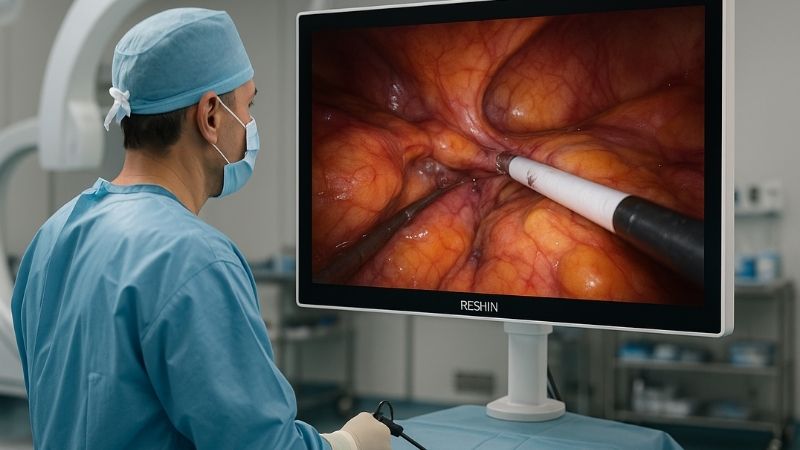
"Compared to smaller screens, a 32-inch monitor reduces the need for repetitive eye and head movements, improving surgical efficiency6 and comfort." With models like the MS321PB, screens are broad enough to encapsulate necessary procedure areas without forcing unnecessary pivots. The optimal size integrates seamlessly into the surgical suite, aligning ergonomically with fixed setups, minimizing shifts in sight and direction. This strategic size also allows multiple imaging streams, such as ultrasound and endoscopic feeds, to align logically, keeping all vital statistics and imagery within one clear view, thus enhancing situational awareness7.
Can 32 inches support multi-modal image display without distraction?
Multi-modal displays can overwhelm procedural clarity if screens aren’t managed well, disrupting surgical flow with cluttered visuals.
A 32-inch screen effectively supports multi-modal imaging, minimizing distraction by providing an organized view of varied streams, thus supporting cohesive surgical outcomes.
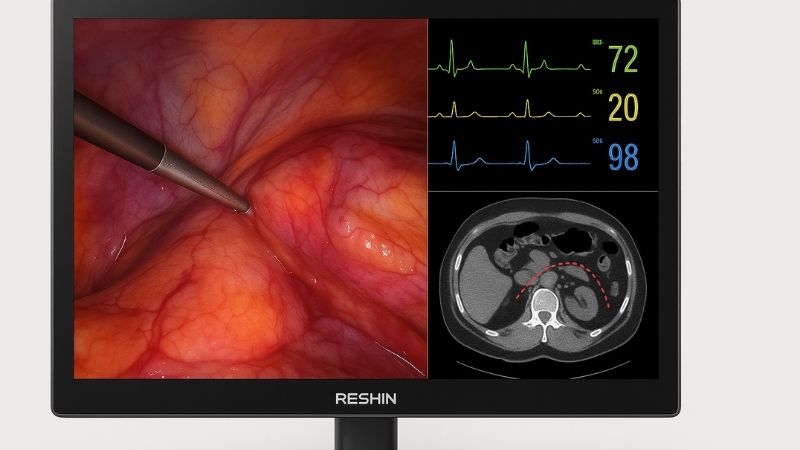
"It provides enough screen real estate8 for split-view imaging, such as combining endoscopic feed with vital signs or navigation overlays, all without compromising clarity." Such capability is exemplified by Reshin’s MS270P model, employing the size to suit surgical towers and maintain pairing of multi-source video inputs9 without overlap. Surgical displays can integrate secondary feeds like vital sign monitors, navigation data, and endoscopic views side by side, without visual compromise. Keeping these elements synchronized ensures real-time procedural inputs are openly available to the surgeon, maintaining singular focus on the subspecialty performance.
Conclusion
The 32-inch surgical monitor thrives in laparoscopic procedures by enhancing precision and clarity, merging immersive detail with technical versatility in a harmonious surgical experience.
Explore how Reshin’s 32-inch monitor can support your laparoscopic precision—reach out to us at martin@reshinmonitors.com.
- Explore how surgical monitors enhance precision and awareness during complex surgeries, ensuring better outcomes for patients. ↩ ↩
- Learn about natural depth enhancement and its role in improving spatial awareness for surgeons during procedures. ↩ ↩
- Explore how high-resolution displays enhance surgical precision and outcomes, making procedures smoother and more efficient. ↩
- Understanding the significance of eye-hand sync can improve surgical techniques and patient outcomes, making this resource invaluable. ↩
- Learn about the impact of cognitive load on surgeons and how minimizing it can lead to better performance and reduced fatigue. ↩
- Discover innovative technologies that boost surgical efficiency, ensuring better outcomes and streamlined processes. ↩
- Learn about the critical role of situational awareness in surgical procedures and how it impacts patient safety and outcomes. ↩
- Understanding screen real estate is crucial for optimizing surgical displays, ensuring clarity and efficiency during procedures. ↩
- Exploring multi-source video inputs can reveal how they improve surgical outcomes by providing comprehensive visual data to surgeons. ↩

